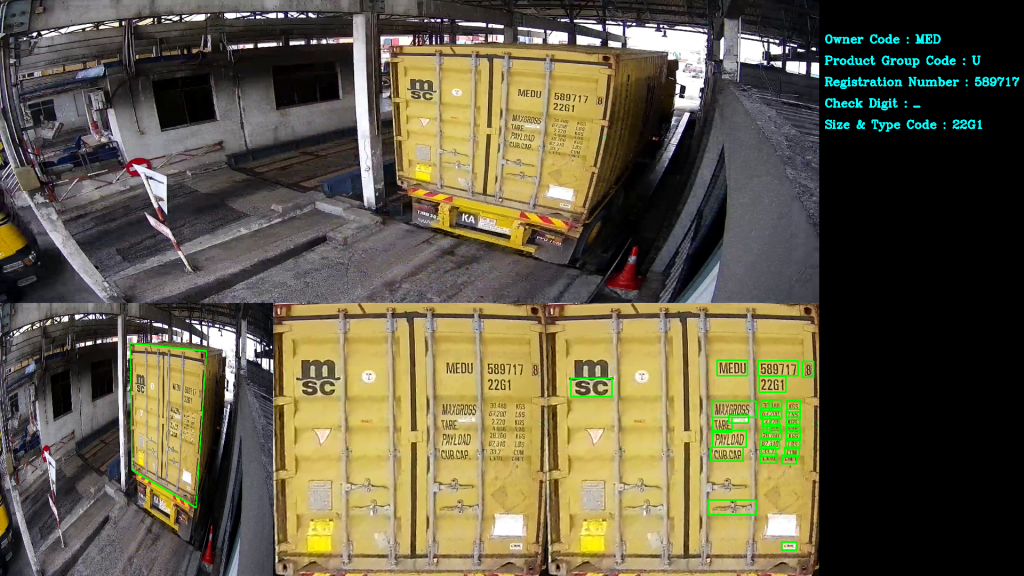OCR Technology: Positioning Greater Success in the Fast-Paced Logistics Industry
OCR (Optical Character Recognition) is a technology that enables the transformation of printed or handwritten text into a machine-readable digital format. It uses artificial intelligence and computer vision technology to recognize and convert different types of documents, such as scanned paper files or images, into editable and searchable data. With the ability to automate data capture processes, improve accuracy, and facilitate efficient document management, OCR technology plays a crucial role in various industries, including logistics. goggles, masks, vests, coveralls, harnesses and many more. Employers need to determine potential risks at work, supply workers with the required PPE, assure its proper fit and functionality, and train staff on how to use, maintain, and dispose of it properly. To effectively reduce hazards in the workplace, employees should wear the PPE that is provided on a regular basis, report any faults or difficulties, and adhere to the set safety regulations. However, there are still cases where employees refuse to adhere to the PPE rules due to many given reasons such as discomfort and too much hassle.
Challenges in the Logistics Industry Without OCR
The absence of OCR technology in the logistics industry poses significant challenges. These challenges include:
1. Manual Data Entry:
- Logistics operations are heavily reliant on manual data entry without OCR, which can present problems like increased errors, extended processing times, and decreased data accuracy. Manual data entry takes a lot of time and is prone to errors, which could cause delayed shipments, inaccurate inventory records, and decreased supply chain visibility.
2. Increased Error Rates
- Human data entry mistakes could lead to inaccurate shipping information, addresses, or inventory data. Without the use of OCR, these mistakes can damage the reputation of logistics companies by causing delivery delays, lost shipments, and disgruntled customers.
3. Inventory Management
- Without OCR, Inventory management relies on manual counting and recording, making it a labor-intensive and error-prone process. This can lead to inconsistent stock levels, inefficient warehouse utilization, and difficulties in meeting customer demand. Poor inventory control has a negative effect on supply chain efficiency, customer satisfaction, and order fulfilment.
4. Higher Operational Costs
- Manual data entry requires more labour when OCR is absent, raising operational costs for logistics businesses. The requirement for additional staff to handle paperwork can increase costs and harm overall profitability.

How OCR is Implemented in Logistics
In logistics, OCR is commonly implemented through specialized artificial intelligence software or computer vision systems capable of processing scanned or photographed documents containing text. When a document, such as a shipping label or an invoice, is received, the OCR software interprets the text and converts it into a machine-readable format. This enables logistics companies to automate data entry, streamline document processing, and enhance inventory management and shipment tracking accuracy.
How Does OCR Benefit the Logistics Industry?
1. Automation and Efficiency
- OCR technology automates data entry processes, reducing the need for manual data input. This significantly speeds up document handling, allowing logistics companies to process large volumes of paperwork quickly and efficiently.
2. Improved Accuracy
- Manual data entry is prone to human errors, which can lead to costly mistakes in logistics. OCR minimizes the risk of errors by accurately capturing data from documents, and ensuring that shipment details, addresses, and inventory information are recorded correctly.
3. Enhanced Document Management
- By converting documents into digital, searchable formats, OCR improves document management. It becomes easier to organize, search, and retrieve critical information, leading to better traceability and transparency in logistics operations.
4. Cost Saving
- Implementing OCR in logistics reduces the need for manual data entry personnel and associated labour costs. Additionally, improved accuracy and faster processing lead to fewer shipment errors, which can save money on returns, replacements, and customer service issues.
Why Tapway Solution ?
OCR technology is essential in many sectors, including logistics, as its implementation offers a host of benefits and advantages to both workers and companies. However, the absence of OCR in logistics poses significant challenges, such as manual errors, increased operational costs, and inefficient inventory management. At Tapway, we aim to address these issues and enhance logistics operations. With our VisionTrack solution, you can now automate your logistics operations, improving efficiency while saving costs and positioning your business for greater competitiveness and success in the fast-paced supply chain environment.
Click here to learn more about our services or send an email to sales@gotapway.com. We look forward to collaborating with you.
Experience the game-changing benefits of our advanced license plate recognition system and transform your security and access control – Request a demo now!